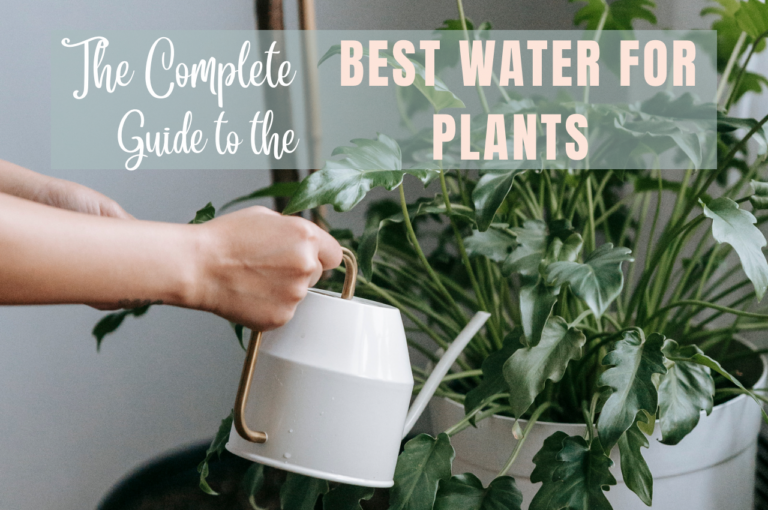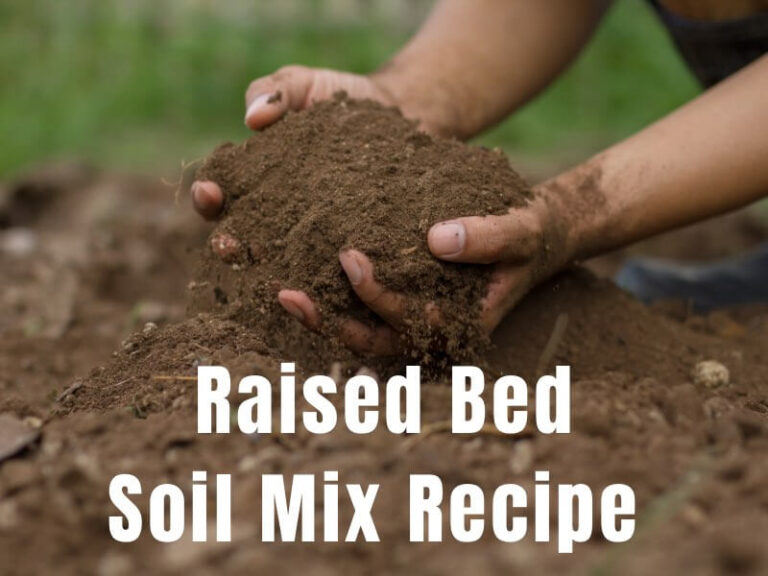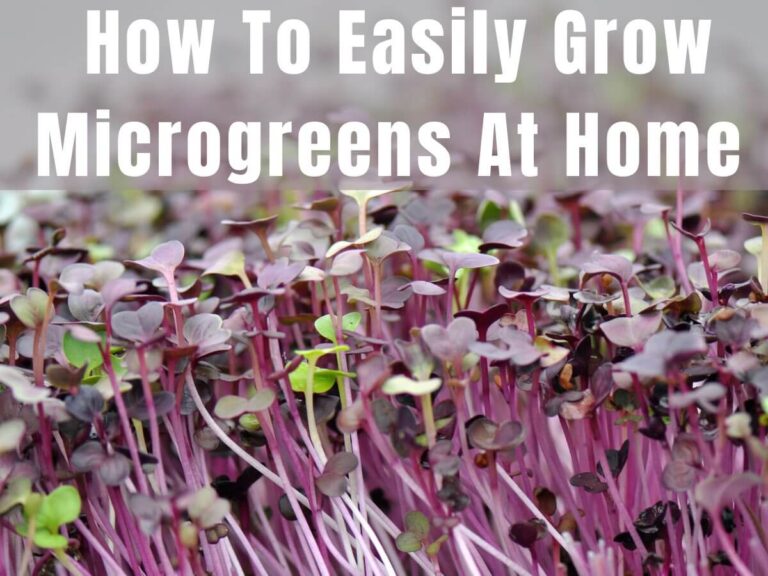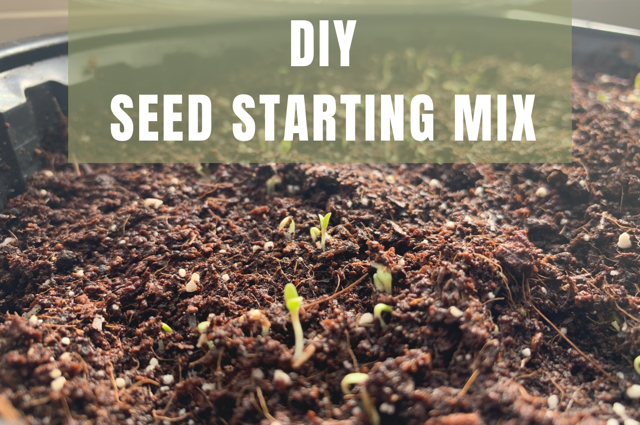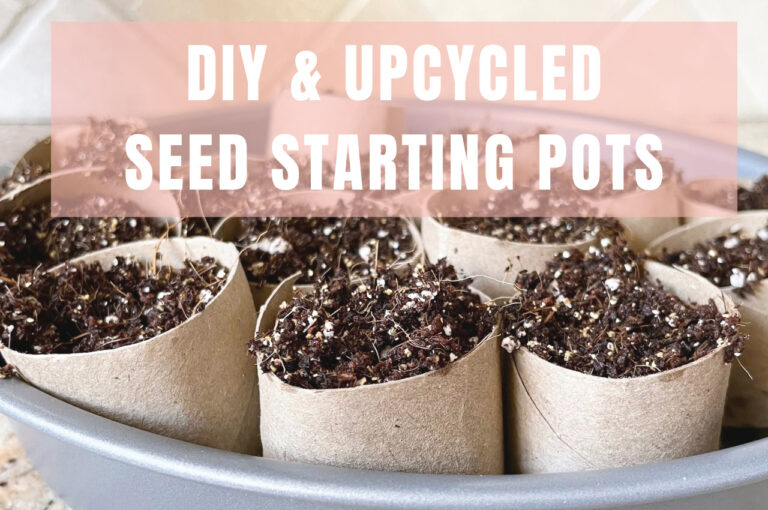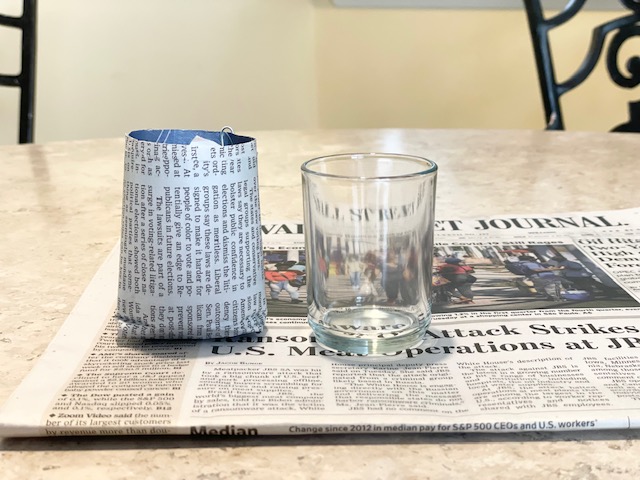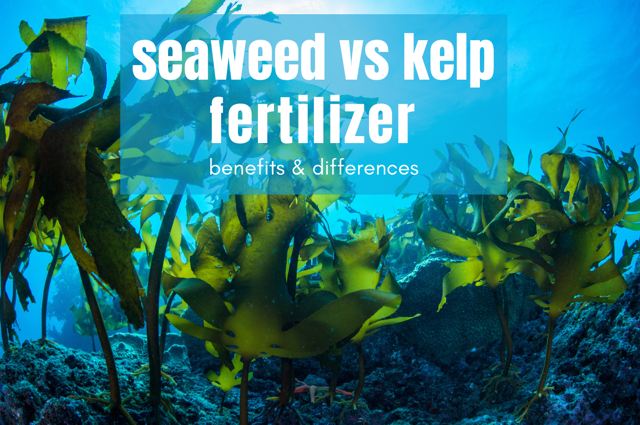
Seaweed vs Kelp Fertilizer: Benefits, Differences, and How To Use For Indoor and Outdoor Plant Growth
This post may contain affiliate links. You can read my full policy here.
Have you ever looked into different garden fertilizers and all of the options available? It can seem overwhelming at times!
In the realm of fertilizers, there are many options. First, there are natural fertilizers and chemical fertilizers, which in simple terms means “made from natural materials” or “made from chemicals.”
Within those two categories, there are even more options.
For myself and my client’s gardens, I try to stick with organic fertilizers, especially with fruits and vegetables. Even still, there are several options. There are bone and blood meals, fish emulsion, and fertilizers designed for specific plants, such as Tomato-tone and Hollytone. It can get a little overwhelming and confusing!
Today, I’m going to discuss two types of organic fertilizers, seaweed and kelp, and the differences between the two and benefits of each. Both are great options for plants, both indoor and outdoor, and are very similar. However, there are a few differences between seaweed and kelp fertilizer (also called kelp meal or kelp extract) that should be noted.
Let’s break down the differences and the benefits of each, so you can decide which one (or both!) is right for your garden.
What are seaweed fertilizers?
Seaweed fertilizers are a type of organic fertilizer made from seaweed. They’re usually found in liquid form and have been used since ancient times to improve soil and plant health.
Seaweed-based fertilizers are made by collecting seaweed, rinsing away a good portion of the salt water, and then fermenting the seaweed in water until the seaweed has broken down and decomposed. What’s left is a slurry or liquid, full of nutrients and beneficial microorganisms.
Seaweed fertilizers are often called growth regulators, and are known for boosting growth rates, almost overnight. This is because they contain growth hormones that help regulate the growth of plants.
Seaweed fertilizers can also be called liquid seaweed extract or seaweed powder, depending on the type.
What is kelp fertilizer?
Kelp fertilizer is a type of seaweed fertilizer. Kelp is a type of brown seaweed, typically found in shallow saltwater, and is the most popular type of seaweed.
Brown seaweeds, such as kelp, are typically higher in iodine and calcium than other seaweeds.
Kelp fertilizer can also be called kelp seaweed, kelp powder, kelp extract, sea kelp or kelp meal fertilizer, depending on the type.
Kelp vs Seaweed fertilizer – what’s the difference?
There are many species of seaweed, including kelp, nori, spirulina, and wakame. Kelp is a brown type of seaweed, and typically one of the larger types of seaweeds.
Although both types of fertilizers provide essential nutrients for your plants, kelp fertilizer tends to be higher in iodine and calcium, along with many other trace nutrients. These include calcium, magnesium, copper, iron, sulfur, manganese, and zinc.
While both seaweed fertilizer and kelp fertilizer give your plants quite a boost in nutrients, kelp tends to be higher in overall nutrients.
Additionally, kelp fertilizer is typically found in powder or ground meal form, while seaweed fertilizer tends to be in liquid form.
Benefits of kelp and seaweed fertilizers
Both seaweed and kelp fertilizers are great options for your garden. They are full of nutrients, including many micronutrients, although kelp fertilizers tend to have a higher nutritional profile than seaweed fertilizers.
Some additional benefits of each include:
- Great fertilizer for vegetable and flower gardens, and indoor plants
- Introduces new soil microorganisms, and boost health of existing microorganisms, which improves soil structure
- The microorganisms in seaweed fertilizers exude a sticky substance that binds them to the soil near plant roots. This keeps nutrients near plant roots instead of washing away to the bottom layers of soil or out the bottom of the pot.
- Nutrients in seaweed and kelp fertilizers are in a form that is quickly absorbed by plants compared with other types of fertilizers
- Liquid forms can be applied in a foliage application (directions below) for even greater nutrient uptake
- A natural fish smell, which can help keep pests with sensitive noses away from your garden
- Acts as a growth stimulant
- Encourages root growth
- Boosts flower production
- Helps cut flowers last longer in the vase
- Fruits can be sweeter and vegetables larger
- Higher yields
- Plants have greater overall appearance and vigor, and are more resistant to pests and disease
- Helps plants recover from transplant shock
- Helps relieve stressed plants
- Fruits and vegetables last longer after harvest
- Can contain up to 70 different trace minerals
- Very mild and won’t burn plants, making it a good choice for delicate seedlings
- Seaweed, and kelp in particular, are readily available and a sustainable option for your garden
- Natural, organic, and mild, and won’t harm the environment from runoff
Which is better kelp or seaweed?
While both kelp and seaweed fertilizers are an excellent option for your garden, kelp tends to be higher in trace elements, along with calcium. This makes it a better choice for the garden when comparing the two.
However, there are many options that include both kelp and seaweed fertilizers in a liquid form. This allows you to get the benefits of both, with the added benefit of being in liquid form, which is easier for plants to use.
Where to find seaweed and kelp fertilizers
Seaweed and kelp fertilizers can be found at most garden centers. You can also find them at Amazon. Some great options are this liquid seaweed fertilizer and this kelp meal fertilizer. This seaweed and kelp mixture is a great all-purpose option, as well.
How to use kelp and seaweed fertilizers
There are several ways you can use seaweed and kelp fertilizers. For liquid fertilizer, plants can be fed the traditional way through watering, or through a foliar feeding.
I have included instructions below for traditional water fertilizing, a foliar application, and in granular form.
To use as a traditional fertilizer:
Mix the liquid fertilizer with water according to the label.
*Never use liquid fertilizers straight from the bottle, as this will burn plants. Always use a diluted mixture for feeding plants*
Typically, this is 1 part fertilizer to 10 parts water, but there are several factors that affect this, including concentration and size of plants. Refer to the label on the bottle for mixing instructions.
- For large plants: feed diluted liquid fertilizer every 2-4 weeks
- For seedlings and small plants: feed diluted liquid fertilizer every 1-2 weeks
As a foliar spray:
Apply diluted liquid fertilizer onto the foliage of your plants until the leaves are dripping. Pour any remaining fertilizer around the base of the plants. Apply every 2 to 4 weeks.
For granular fertilizers (typically kelp)
- Spread the fertilizer around the base of your plant, and rake into the top inch of soil with your fingers. Lightly water the area around your plant, so the fertilizer soaks into the soil.
- Reapply every month during the growing season.
- Can also be mixed thoroughly into the soil at planting time, according to the amount listed on the label.
You may also like:
How To Feed Acid Loving Plants With Hollytone
25 Easy Ways To Make Plants Grow Bigger, Faster
Final Thoughts
Although both seaweed and kelp fertilizers are an excellent choice for improving plant vigor and size, and providing trace nutrients and microorganisms, it should be noted that they are not a complete fertilizer.
Complete fertilizers provide your plants with nitrogen, phosphorus, and potassium, which are essential for plant growth. Seaweed and kelp fertilizers do not provide enough of these minerals.
For that reason, they should be used as a part of a complete feeding schedule for your plants.
To learn more about feeding plants, Better Homes and Gardens has a great article all about fertilizing indoor and outdoor plants.
FAQ
Does kelp help root growth?
Seaweed fertilizers, such as kelp, contain growth hormones. These growth hormones stimulate growth in plants, including root growth. Additionally, kelp is very mild and won’t burn sensitive plant roots.
How often should I use kelp fertilizer?
Liquid kelp fertilizer can be applied as often as every 1-2 weeks during the growing season. Kelp meal and granular forms should be applied once per month.
Can you over fertilize with kelp?
Yes, it’s possible to over fertilize with kelp. Doing so will cause unhealthy or stunted growth in plants. If you happen to apply too much kelp fertilizer, flush the soil with water to help wash away the excess.
Can kelp fertilizer burn plants?
If diluted properly, according to the directions on the label, kelp fertilizer should not burn plants.
What NPK is seaweed fertilizer?
The NPK of seaweed fertilizer varies by individual product but is typically 0-0-1. Seaweed fertilizers are not a complete substitute for NPK fertilizers.
Fish emulsion vs seaweed fertilizer
Fish emulsion is made from ground up fish that have partially decomposed. Seaweed fertilizer is from fermented seaweed. While both are great options for plants, fish emulsion is high in nitrogen for leafy growth, while seaweed fertilizer contains microorganisms and boosts soil health and plant vigor.
Do seaweed fertilizers feed beneficial soil microbes?
Although mineral fertilizers can sometimes harm or disrupt the health of beneficial soil microbes, seaweed fertilizers seem to be safe for soil microbes and improve the health of garden soil.
As an Amazon Associate, I earn from qualifying purchases


